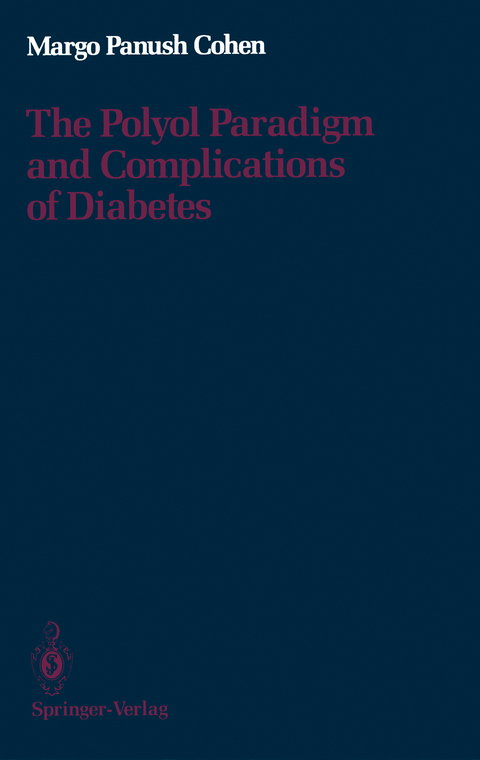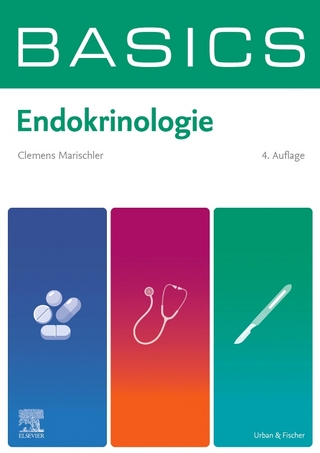
The Polyol Paradigm and Complications of Diabetes
Seiten
2011
|
Softcover reprint of the original 1st ed. 1987
Springer-Verlag New York Inc.
978-1-4612-9108-4 (ISBN)
Springer-Verlag New York Inc.
978-1-4612-9108-4 (ISBN)
In the last decade, it has become increasingly evident that the clini- cal and morphologic changes underlying many of the complications of diabetes, including cataract formation, retinopathy, nephropathy, neuropathy, and macrovascular disease, are preceded by a variety of disturbances of biochemical and physiologic origin. Dr. Cohen has recently written a superb monograph, entitled Diabetes and Protein Glycosylation: Measurement and Biologic Relevance, in which she thoroughly explores how enhanced nonenzymatic glycosylation in uncontrolled diabetes underscores the pressing need for main- tenance of long-term euglycemia. In the present volume, The Polyol Paradigm and Complications of Diabetes, she reviews, in a most succinct and thorough manner, how another biochemical mechan- ism, involving the polyol pathway, is involved in the pathogenesis of such diabetes complications as retinopathy, neuropathy, nephropa- thy, and cataract formation. Dr.
Cohen gives us a clearly written and comprehensive mono- graph, reviewing the chemistry of the polyol pathway and of the aldose reductase inhibitors, and the pathophysiologic significance of increased polyol pathway activity in a variety of tissues affected by Vlll Foreword diabetes mellitus. She insightfully describes the relationship of increased polyol pathway activity to altered metabolism of inositol- containing phospholipids and to changes in various tissue concentra- tions of myo-inositol. Finally, she provides us with a careful review of the existing experimental and clinical studies with a variety of different aldose reductase inhibitors that have been and are being performed in the hope of preventing or reversing long-term compli- cations of diabetes.
Cohen gives us a clearly written and comprehensive mono- graph, reviewing the chemistry of the polyol pathway and of the aldose reductase inhibitors, and the pathophysiologic significance of increased polyol pathway activity in a variety of tissues affected by Vlll Foreword diabetes mellitus. She insightfully describes the relationship of increased polyol pathway activity to altered metabolism of inositol- containing phospholipids and to changes in various tissue concentra- tions of myo-inositol. Finally, she provides us with a careful review of the existing experimental and clinical studies with a variety of different aldose reductase inhibitors that have been and are being performed in the hope of preventing or reversing long-term compli- cations of diabetes.
1. Introduction.- 2. Chemistry.- Aldose Reductase and Sorbitol Dehydrogenase.- Aldose Reductase Inhibitors.- 3. Aldose Reductase and Complications of the Eye.- Cataracts.- Retinopathy.- Keratopathy.- 4. Diabetic Neuropathy.- 5. Diabetic Nephropathy.- 6. Aldose Reductase and the Vascular System.- Microvasculature.- Macrovasculature.- Erythrocytes.- 7. Clinical Trials.
| Vorwort | Harold Rifkin |
|---|---|
| Zusatzinfo | XII, 143 p. |
| Verlagsort | New York, NY |
| Sprache | englisch |
| Maße | 155 x 235 mm |
| Themenwelt | Sachbuch/Ratgeber ► Gesundheit / Leben / Psychologie ► Krankheiten / Heilverfahren |
| Medizinische Fachgebiete ► Innere Medizin ► Endokrinologie | |
| Studium ► 1. Studienabschnitt (Vorklinik) ► Biochemie / Molekularbiologie | |
| Studium ► 1. Studienabschnitt (Vorklinik) ► Physiologie | |
| Naturwissenschaften ► Biologie ► Biochemie | |
| Naturwissenschaften ► Biologie ► Humanbiologie | |
| ISBN-10 | 1-4612-9108-9 / 1461291089 |
| ISBN-13 | 978-1-4612-9108-4 / 9781461291084 |
| Zustand | Neuware |
| Haben Sie eine Frage zum Produkt? |
Mehr entdecken
aus dem Bereich
aus dem Bereich
Buch | Hardcover (2023)
UNI-MED (Verlag)
CHF 55,70


